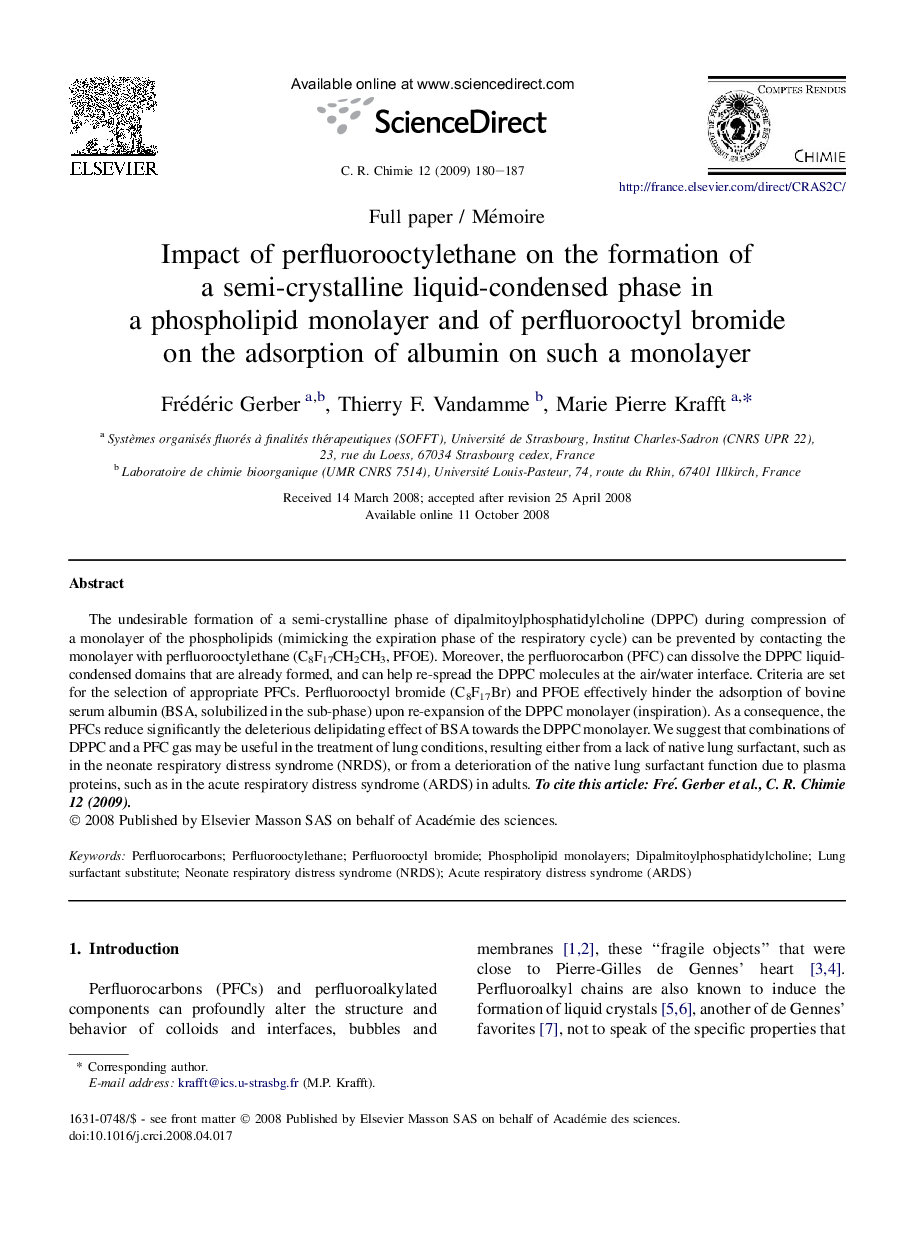| Article ID | Journal | Published Year | Pages | File Type |
|---|---|---|---|---|
| 171612 | Comptes Rendus Chimie | 2009 | 8 Pages |
The undesirable formation of a semi-crystalline phase of dipalmitoylphosphatidylcholine (DPPC) during compression of a monolayer of the phospholipids (mimicking the expiration phase of the respiratory cycle) can be prevented by contacting the monolayer with perfluorooctylethane (C8F17CH2CH3, PFOE). Moreover, the perfluorocarbon (PFC) can dissolve the DPPC liquid-condensed domains that are already formed, and can help re-spread the DPPC molecules at the air/water interface. Criteria are set for the selection of appropriate PFCs. Perfluorooctyl bromide (C8F17Br) and PFOE effectively hinder the adsorption of bovine serum albumin (BSA, solubilized in the sub-phase) upon re-expansion of the DPPC monolayer (inspiration). As a consequence, the PFCs reduce significantly the deleterious delipidating effect of BSA towards the DPPC monolayer. We suggest that combinations of DPPC and a PFC gas may be useful in the treatment of lung conditions, resulting either from a lack of native lung surfactant, such as in the neonate respiratory distress syndrome (NRDS), or from a deterioration of the native lung surfactant function due to plasma proteins, such as in the acute respiratory distress syndrome (ARDS) in adults.
